According to Trek, the name says it all. With bold claims that the Trek Rail 7 glides through rough terrain like it’s on rails, how does the € 5,499 eMTB fare against the competition with its Bosch motor and 29″ wheels?
Click here for an overview of the best budget eMTB
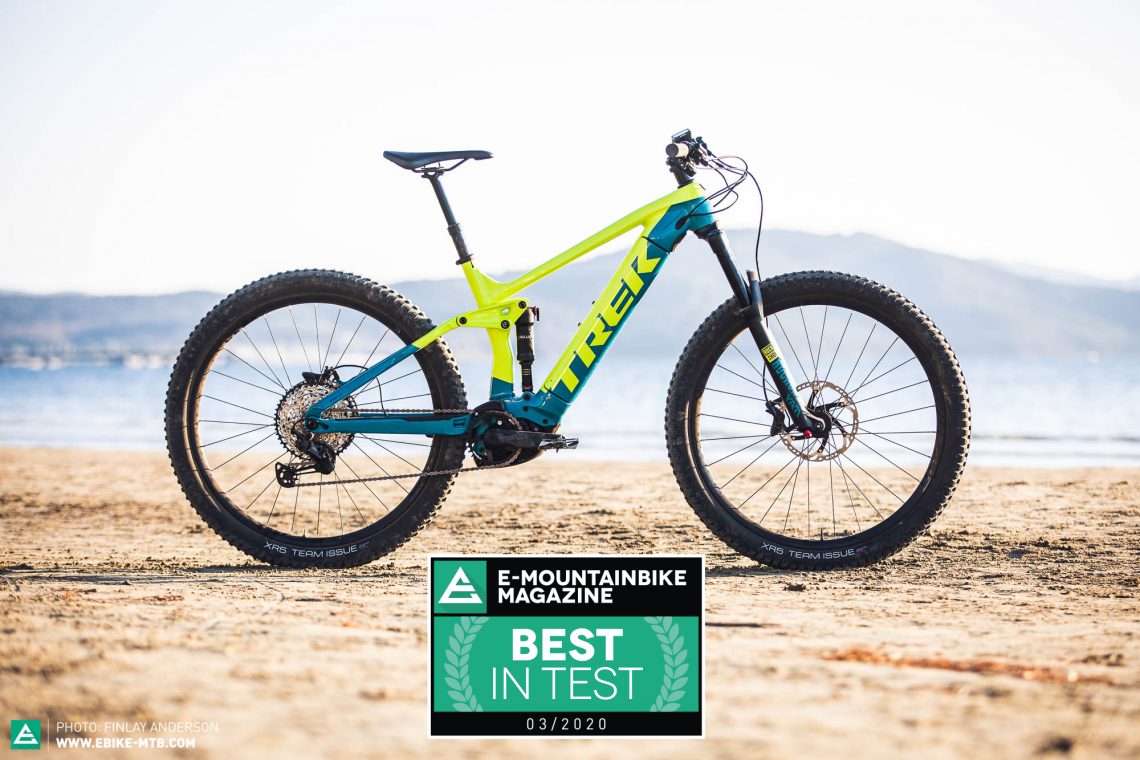
23.4 kg in size L | € 5,499 | manfacturer website
The Trek Rail 7 is anything but inconspicuous with its neon yellow and blue paint job. If that’s more attention than you can handle, the classic Trek design of the € 5,499 Rail is also available in a more subtle black and red. Trek rely on Bosch’s latest motor offering and power it with a 625 Wh battery. The standout feature of the battery is its quick and easy removal from the side of the down tube for external charging. The integration of the entire system is excellent in terms of both haptics and optics, with a specially developed charging socket in the seat tube and the speed sensor securely hidden in the dropout. You have the option of mounting a kickstand on the chainstay and the cables are neatly routed through the inside of the high-quality aluminium frame without ever rattling. At 23.4 kg (size L), the Trek Rail 7 is one of the lightest bikes on test despite its large 29” wheels and 160/150 mm travel. Controlling the travel is a RockShox Yari RC fork and a Deluxe Select+ shock. The entry-level Shimano MT-520 four-piston brakes perform well paired with 200 mm rotors front and rear. The components on the Rail 7 that we didn’t like include the 130 mm dropper post, which is far too short, and the Bontrager XR5 tires, which tend to wash out, especially on soft surfaces.
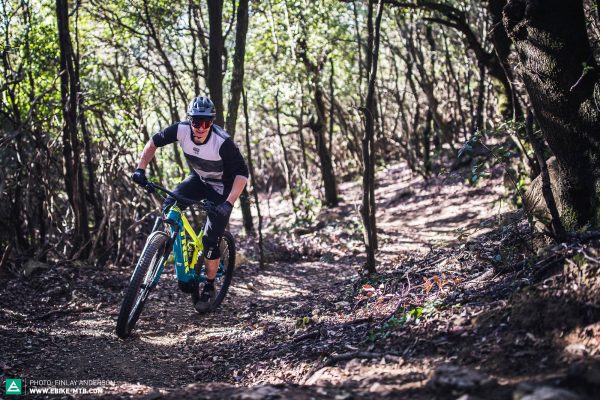

Trek Rail 7
€ 5,499
Specifications
Motor Bosch Performance Line CX 75 Nm
Battery Bosch PowerTube 625 Wh
Display Bosch Purion
Fork RockShox Yari RC 160 mm
Rear Shock RockShox Deluxe RL 150 mm
Seatpost TranzX JD-YSP18 130 mm
Brakes Shimano MT520 4-Kolben 200/200 mm
Drivetrain Shimano XT/SLX 1x12
Stem Bontrager Rhythm Comp 50 mm
Handlebar Bontrager Rhythm Comp 780 mm
Wheelset Bontrager Line Comp 30 29"
Tires Bontrager XR5 Team Issue 2.6"
Technical Data
Size S, M, L, XL
Weight 23.4 kg
Perm. total weight 136 kg
Max. payload (rider/equipment) 112 kg
Trailer approval no
Kickstand mount yes
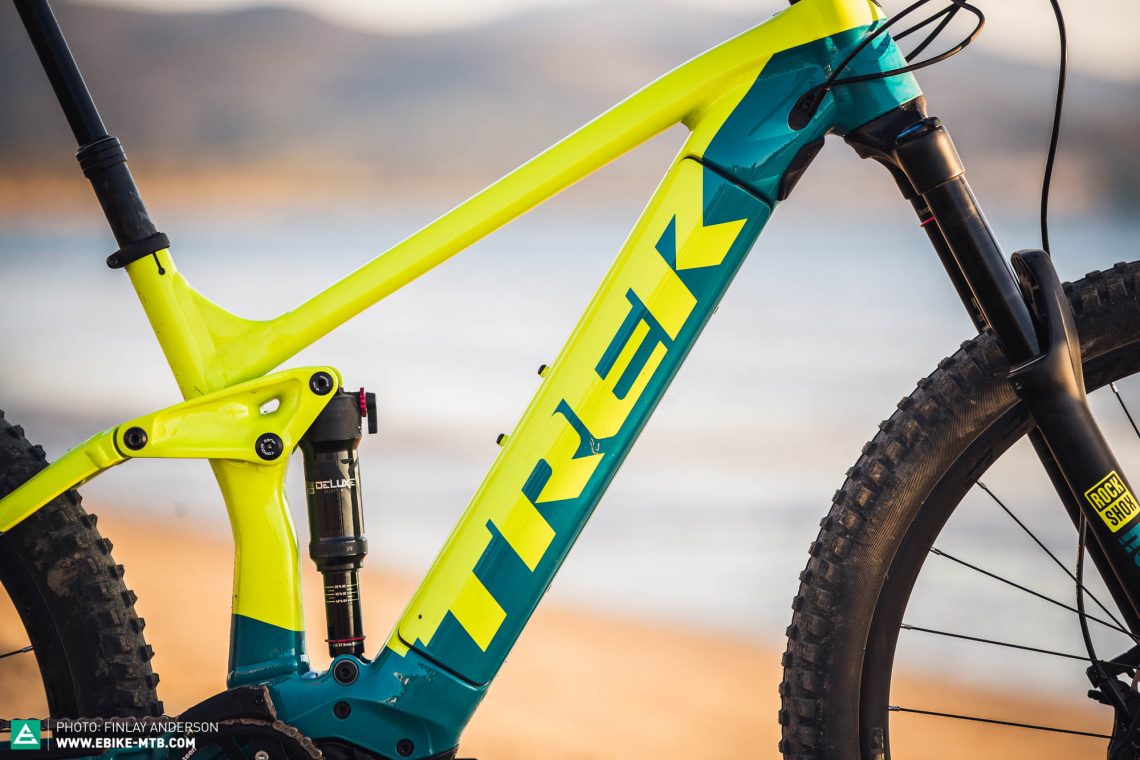
The 625 Wh battery is nicely secured in the down tube and never rattles. To remove it, you pull it out to the side and it even has an integrated handle for easy carrying. It all feels very solid!

Bontrager’s XR5 tire offers little traction when leaning it over into the corner and quickly washes out if you’re not careful.
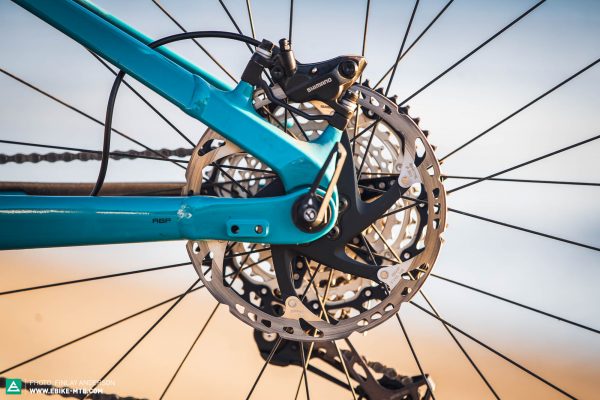
The chainstay incorporates a mount for a stand and also houses the speed sensor, which is securely integrated into the dropout.
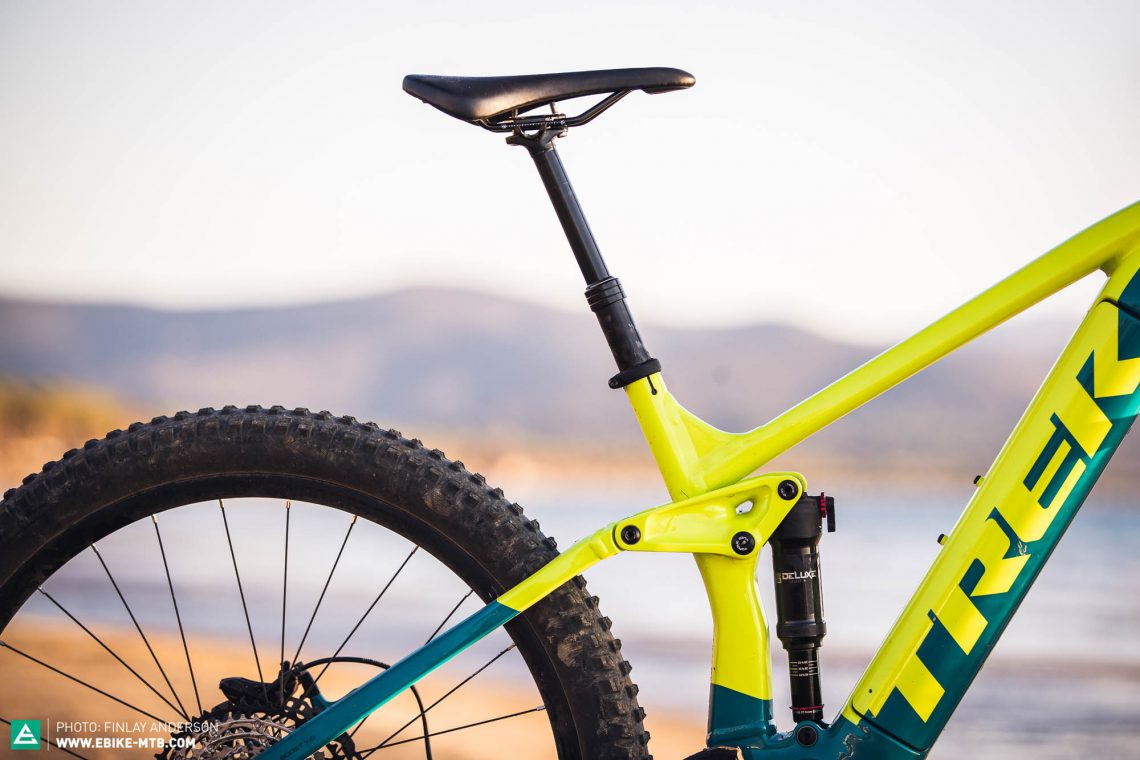
The TranzX dropper post has a stroke length of only 130 mm. Far too short for a size L bike.
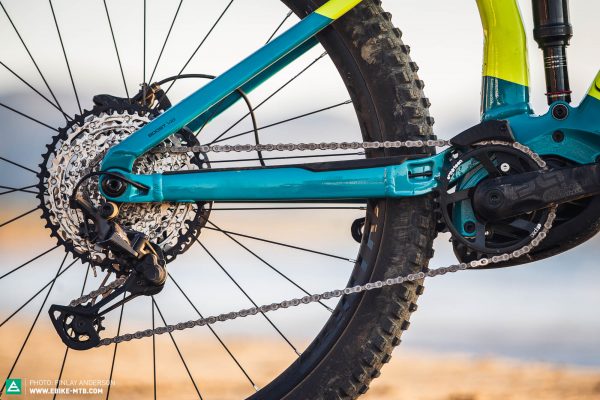
Like CENTURION, Trek spec an XT derailleur with an SLX trigger. The shifting performance would be a lot better the other way round thanks to the XT trigger’s Multi and Instant Release functions.

The RockShox Deluxe Select+ shock on the Rail 7 doesn’t feature Trek’s proprietary Thru:Shaft technology found on the flagship model. Even so, the performance of the rear end remains sensitive yet defined. Thumbs up!
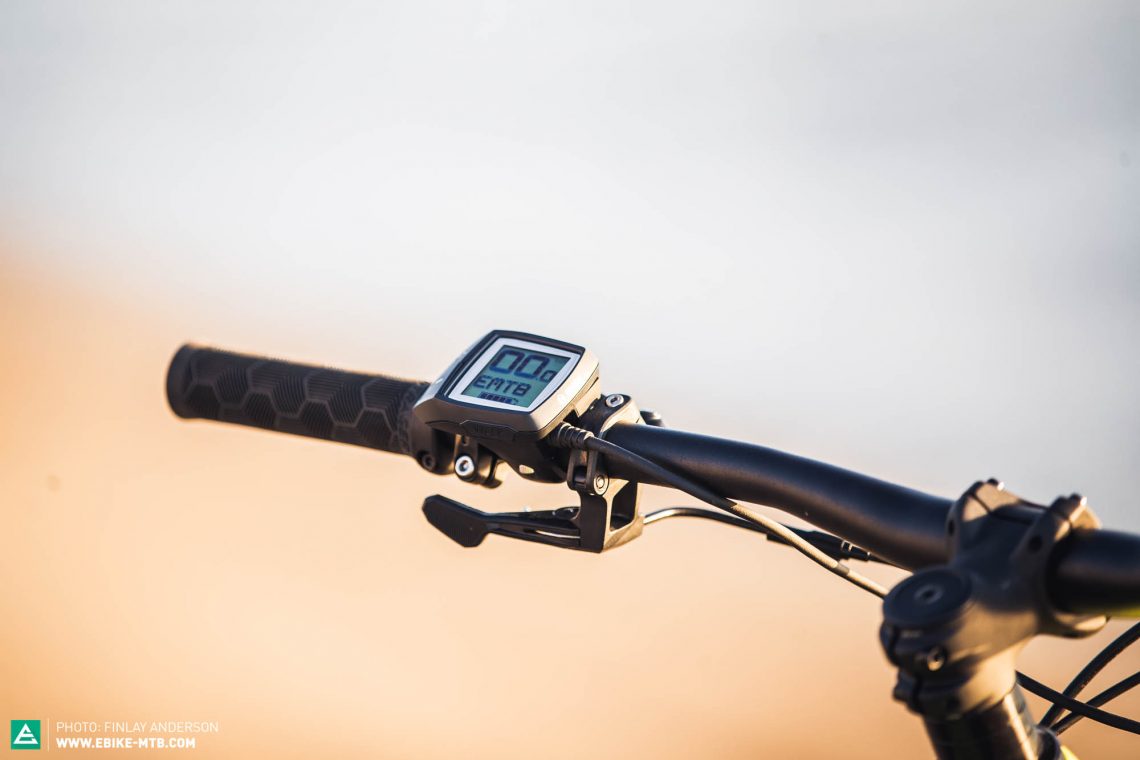
The Purion display might be bulky, but operating it is intuitive. The dropper post lever is slightly offset which makes it work well with the display.
Geometry of the Trek Rail 7
A flip chip allows you to adjust the geometry of the Trek Rail 7 by as much as 0.5°. We preferred the “low” setting on the trail, which contributes to the Rail’s exceptional handling. With a bottom bracket drop of 35 mm, which makes it the lowest on test, the rider’s centre of gravity is positioned nice and low on the bike. Like the CUBE, the Trek also has a distinctive kink in the seat tube, making the effective seat tube angle slacker the further your seatpost is extended.
No other bike on test manages to balance composure with agile and fun handling as well as the Trek Rail 7.
| Size | S | M | L | XL |
|---|---|---|---|---|
| Seat tube | 410 mm | 420 mm | 450 mm | 500 mm |
| Top tube | 588 mm | 613 mm | 634 mm | 666 mm |
| Head tube | 105 mm | 105 mm | 110 mm | 120 mm |
| Head angle | 64.5° | 64.5° | 64.5° | 64.5° |
| Seat angle | 75.0° | 75.0° | 75.0° | 75.0° |
| Chainstays | 448 mm | 448 mm | 448 mm | 448 mm |
| BB Drop | 35 mm | 35 mm | 35 mm | 35 mm |
| Wheelbase | 1,196 mm | 1,221 mm | 1,243 mm | 1,277 mm |
| Reach | 420 mm | 445 mm | 465 mm | 495 mm |
| Stack | 626 mm | 626 mm | 630 mm | 639 mm |
Trek Rail 7 EU on test
The riding position on Rail 7 is very comfortable if you’re on flat terrain. During the course of our test, we put all the available spacers under the stem. Together with its plush and responsive suspension, raising the cockpit helps contribute to the bike’s long-distance comfort.

Pump, jump or plough through: no matter which obstacles the trail serves up, the Trek Rail descends at Mach 10 and like it’s on rails.
On climbs, the Trek positions taller riders far towards the back of the bike. It feels as though you’re pedalling the bike from behind and you have to actively shift your weight to keep the front wheel planted. If you aren’t as tall, you’ll already be in a more central position on the bike and technical climbs take a lot less physical effort. However, you’ll still have to time your pedal strokes carefully to avoid clipping them on obstacles. That is the downside of such a low bottom bracket.
But exactly that low bottom bracket positions you low and central on the Trek Rail as you descend, instilling you with confidence in steep chutes and at high speeds. So much so that the Rail has you leaving the brakes open for as long as possible. The Rail is equally happy rolling over large obstacles as it is jumping them, the suspension being plush and capable while still offering enough support for active manoeuvres. However, at slow speeds and in open corners, the handling of the Rail 7 is not as intuitive as the CUBE or Moustache. You have to get actively involved in weighting the front end, but if you do, the bike gives back what you put in and rewards you with direct and responsive handling. If you’re prepared to ride the Trek Rail 7 actively it’ll almost keep up with the Kenevo at high speeds and it’ll easily take on the RADON on flowing trails.
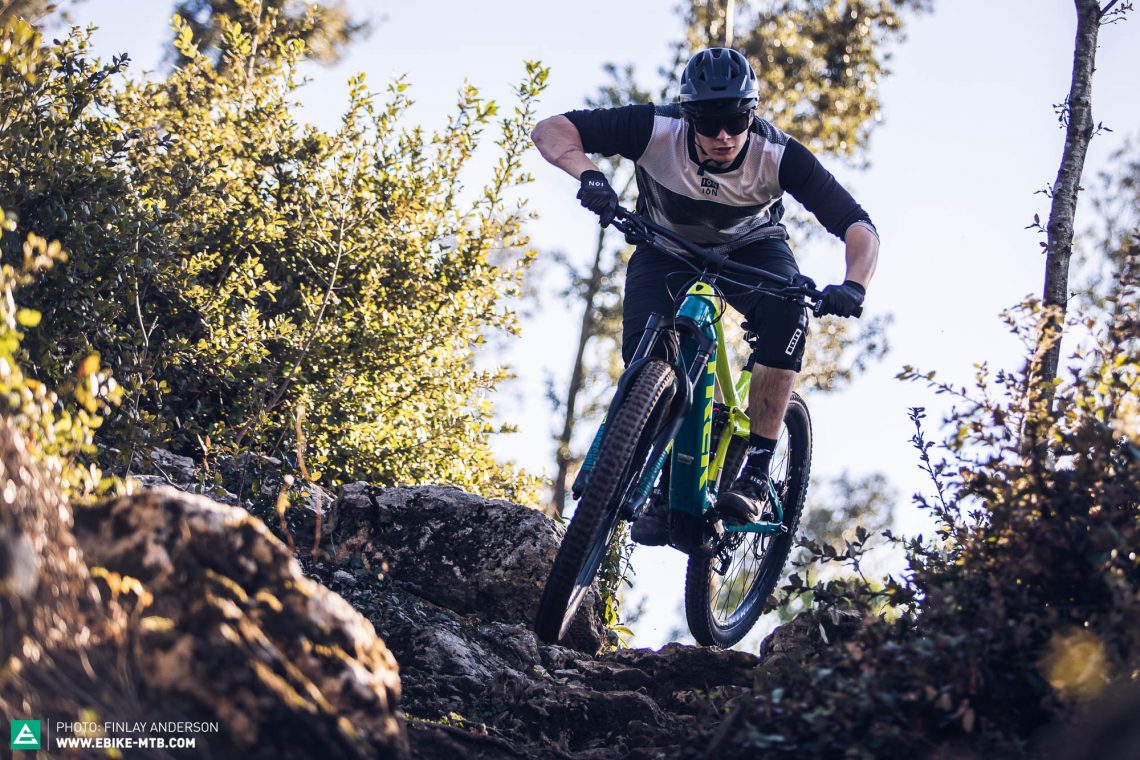


Tuning tips: protective tape on the seat stay to protect against chain slap | grippier tires | longer dropper post (with a short insertion depth like the models from OneUp)
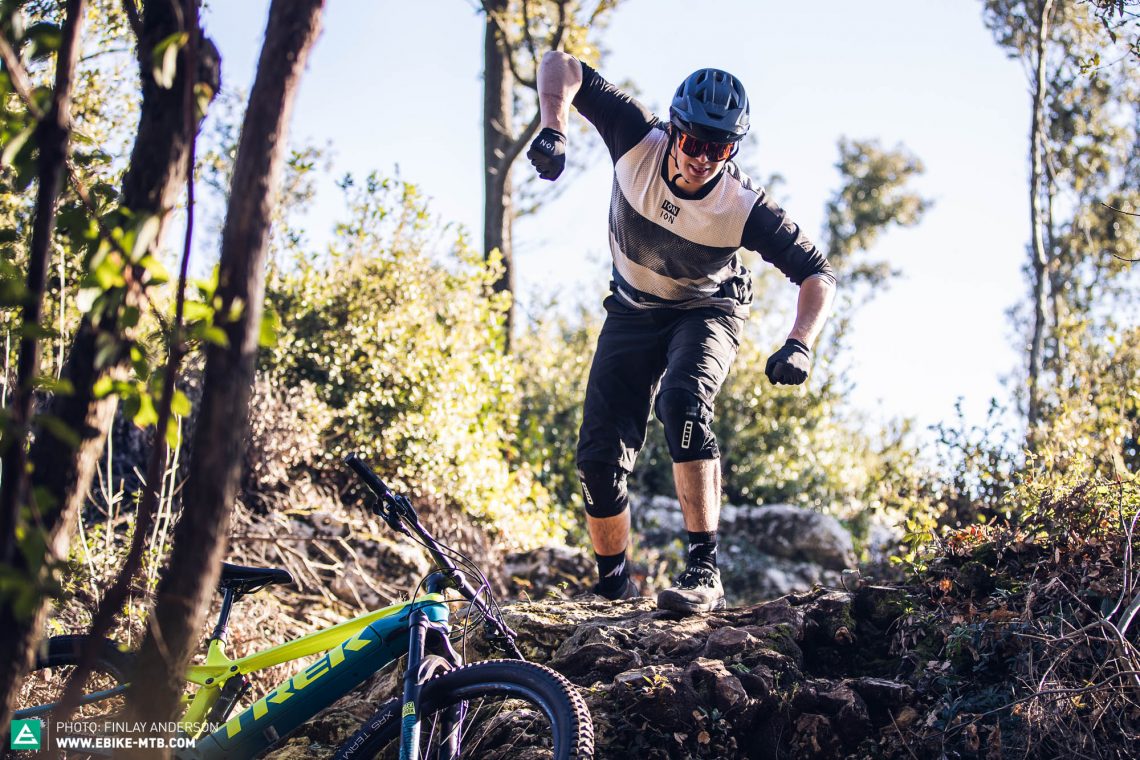
Riding Characteristics
7Agility
- sluggish
- playful
Stability
- nervous
- stable
Handling
- demanding
- balanced
Riding fun
- boring
- lively
Motor feeling
- digital
- natural
Motor power
- weak
- strong
Value for money
- poor
- top
Conclusion of the zum Trek Rail 7 EU
The frame of the Trek Rail 7 is cleverly designed and of the highest quality, masterfully integrating the complete Bosch system. The Trek Rail 7 sets the bar for this group test as soon as the trail points downhill. Whether flowing or technical, it literally glides by the competition like it’s on rails while also offering plenty of comfort for long days in the saddle. No other bike responds to an active riding style as well as the Rail 7, allowing aggressive riders to push their limits. The Trek Rail 7 convinced us with its versatility, excellent handling and high-quality frame, winning the well-deserved Best in Test!
Tops
- tidy, ergonomic cockpit
- simultaneously composed and agile
- defined yet plush suspension
- super capable on the descents
- confidence-inspiring
Flops
- dropper post is too short
- tires only make sense on hard-packed surfaces
- chain slap on the seat stay
For more information head to trekbikes.com
The test field
Click here for an overview of the best budget eMTB
All bikes in review: CENTURION No Pogo E R2600i (Click for review) | CUBE Stereo Hybrid 140 HPC (Click for review) | Haibike XDURO AllMtn 3.0 (Click for review) | Moustache Samedi 29 Game 4 (Click for review) | RADON RENDER 10.0 (Click for review) | Scott Genius eRIDE 920 (Click for review) | Specialized Kenevo Comp (Click for review) | Trek Rail 7 EU
Relaxed and comfortable riding on surfaced roads, both uphill and downhill.↩
Easy climbs up trails with few obstacles, wide turns and a moderate incline.↩
Active and playful descents on easy trails with few obstacles, wide turns and a moderate slope.↩
Single-track climbs on challenging terrain. Loose ground, steps, roots, tight corners and occasionally extreme inclines.↩
Singletrack descents on challenging terrain. Loose ground, steps, roots, tight corners and small jumps as well as some very steep descents.↩
High speed descents on sometimes very rough trails with large jumps and obstacles that you can’t roll over.↩
The rating used for riding characteristics refers to the bikes in the group test and the current state of development of eMTBs. The best bikes managed to blend supposedly opposite riding characteristics, feeling both lively and stable at the same time. The handling describes the balance of the bike on downhill sections. The information regarding motor-power refers to the ride-feeling in the overall context of the bike and not exclusively to the motor – that’s why the same motor can present different values.↩
Did you enjoy this article? If so, we would be stoked if you decide to support us with a monthly contribution. By becoming a supporter of E-MOUNTAINBIKE, you will help secure a sustainable future for high-quality cycling journalism. Click here to learn more.
Words: Photos: Finlay Anderson









